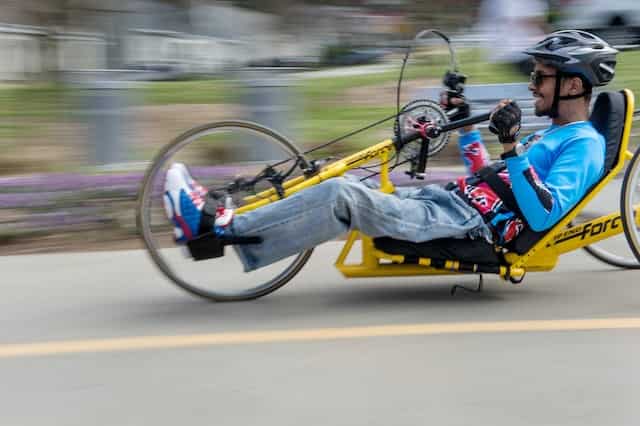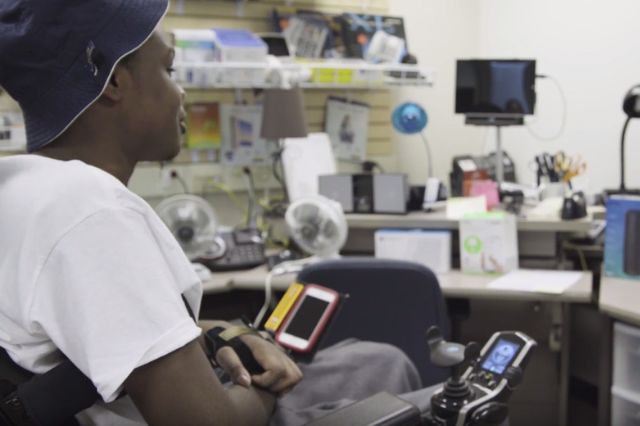Stroke Resources and Patient Education
Stroke Information for Patients and Families
Welcome to our collection of resources dedicated to stroke awareness and post-stroke life management designed for patients and their families. At Shepherd Center, we've curated a range of materials to empower you with knowledge and support. Discover and share these invaluable tools.
Curious about strokes? Visit our condition-specific web pages:
Ready to delve deeper? Download our comprehensive Living with Stroke eBook in PDF format and embark on your journey towards better understanding and management.
Stroke Prevention
People who have had a stroke are at a higher risk of having a second stroke. A big part of stroke recovery and prevention is managing stroke risk factors. The following information about medication use and general health guidelines may help prevent a stroke from occurring.
- Tell your provider about everything you take for your health, including vitamins, herbs, and over-the-counter medications.
- Only take medications that your provider has prescribed for you. Always follow your provider’s instructions.
- Find out about medication side effects and what to do if they happen. If you need help, just ask your pharmacist or provider.
- Make a list of the medications you are taking, why you are taking them, and how they should be taken.
- Get organized. Use a pillbox or chart to help organize your medications. Keep track of what to take and when. Be consistent and take your medications as prescribed.
- You may leave the hospital with a small supply of medication. You will refill this supply at your local pharmacy. Make sure you have all the instructions and prescriptions you need, and order refills before you run out.
- It is very important that you take the medication as prescribed by your provider. Do not skip doses, and do not take extra doses.
- It is normal to bruise/bleed easier or take longer for bleeding to stop, such as a small cut or bleeding gums when brushing your teeth.
- Call your provider if you experience throwing up blood, coughing up blood, or blood in urine or stool.
- Try to avoid other blood thinners, such as alcohol, and over-the-counter pain relievers, like ibuprofen (Advil, Motrin), naproxen (Aleve), and aspirin unless it is recommended by your provider. It is recommended to use acetaminophen (Tylenol) for headaches, fevers, and pain relief while on Eliquis or similar medications.
- Daily exercise is very important.
- Ask your rehabilitation team for a home exercise program suitable for your needs after discharge.
- Your rehabilitation team can help you develop a schedule for your exercise program, set achievable goals, and track your progress.
- Stay at a healthy weight.
- Your healthcare provider may calculate your body mass index (BMI), a measure of body mass based on your height and weight.
- A BMI of 25 to 30 means you are overweight, and a BMI over 30 is a sign of obesity.
- If you have trouble swallowing, you may need softer food and/or thickened liquids.
- Refer to your speech therapist’s discharge instructions or talk with your provider.
Here are Some General Healthy Eating Strategies:
- Eat whole-grain, high-fiber breads and cereals (3 to 6 servings daily).
- Eat a variety of fruits and vegetables. Choose fruits and vegetables with a wide variety of colors (green, white, red, yellow, orange, and purple) to get the best nutrition (5-9 servings a day).
- Drink 5 to 8 glasses of water a day.
- Choose a diet low in saturated fat and moderate in total fat. Opt for leaner meats like fish, chicken, or turkey. If you eat red meat, it is recommended to limit consumption to no more than 18 oz per week or about 3 to 4 servings per week.
- Keep foods safe: keep them cold or keep them hot; wash hands and preparation surfaces often.
- If you are trying to maintain or lose weight, eat smaller portions. Do not “upsize” your meals at fast food restaurants.
- Reduce the amount of sugar and other refined carbohydrates in your diet; drink fewer high-sugar sodas and eat less white bread, junk food, and candy.
- Choose and prepare foods with less salt, especially if you have any heart problems or a family history of heart disease. The DASH eating plan can help (see additional resources, page 10).
- Talk to your provider about what your blood pressure range should be.
- Learn how to take your blood pressure and keep a daily log.
- Make sure you take your blood pressure medication regularly.
- Follow the DASH diet plan.
- Monitor and maintain healthy cholesterol levels.
- High cholesterol or plaque build-up in the arteries can block normal blood flow to the brain and cause a stroke. It may also increase the risk of heart disease and atherosclerosis (hardening of the arteries), which are both risk factors for stroke.
- Saturated fat (animal fat) can raise your blood cholesterol more than anything else in your diet.
- Being overweight or obese can also raise your risk for high cholesterol.
- People with diabetes have health problems that can increase the risk of stroke.
- If you have diabetes, follow your provider’s recommendations for managing diabetes, which can reduce your risk of stroke.
Atrial fibrillation (AF), an irregular heart rhythm, increases your risk for stroke by five times. It is important to work with your provider to control this heart condition.
Drinking more than one or two alcoholic drinks each day can increase your stroke risk and lead to other medical problems, including heart and liver disease and possibly brain damage. Studies have shown that drinking too much alcohol has been negatively linked to stroke.
- Smoking doubles the risk of stroke when compared to a nonsmoker.
- Smoking reduces the amount of oxygen in the blood, causing the heart to work harder and allowing blood clots to form more easily. Smoking increases the amount of build-up in the arteries, which may block the flow of blood to the brain, causing a stroke.
- Good news! Smoking-induced strokes and overall stroke risk can be greatly reduced by quitting smoking.
- Talk to your medical team. They can help you plan a way to quit tobacco and can suggest programs and methods to help you cope with the stress of quitting.
Smoking Cessation Resources
- Quit Now: 1-800-784-8669
- Freedom From Smoking: 1-800-548-8252 or lung.org
- EX: becomeanex.org
- The free EX plan is based on personal experiences from ex-smokers and the latest scientific research.
Life After Stroke
Returning home after a stroke can be very scary. Your medical and rehabilitation team will help you prepare. They will provide you with specific instructions based on your needs. The following is general information about life after a stroke.
- Stroke survivors have an increased risk of a serious fall within the first year following their stroke.
- It is important to keep the environment safe to avoid accidents and injuries.
- Eliminate anything that might be dangerous.
- Keep your house organized and free of clutter.
- Keep pathways wide and clear of electrical cords or other obstacles.
- Remove throw rugs.
- Apply non-skid decals to the floor of the bath or tub.
- Be careful walking or maneuvering your wheelchair if you have pets.
- Keep a telephone within easy reach of your bed. Or, purchase an emergency alert system to help you communicate an emergency. If you have trouble speaking, your speech therapist will help you decide the best communication method.
- It is important that you can move easily around your house and environment.
- You may need to modify your home. It may be as simple as moving furniture or more complicated as installing a ramp.
- Your rehabilitation team will help assess your home environment to determine what modifications will help you move around your house safely.
- It is important for you to be as independent as possible.
- You may need special equipment to help you with activities like bathing and dressing. Some examples are grab bars or transfer benches.
- Your rehabilitation team will provide you with a list of equipment that will help maximize your independence at home.
- Many people ask about their ability to drive after a stroke. It is a complicated activity requiring a certain level of coordination, information processing, and mobility. You will need to talk to your medical and rehabilitation team about the appropriate time to undergo a driver’s evaluation to determine if you are safe to drive independently.
- Shepherd Center offers adapted driving services, which include on-the-road examinations, lessons, and fittings for vehicle modifications. A provider’s referral is required for these services. You can learn more about these services by visiting shepherd.org/driving.
The following are home modification resources that might be helpful for you:
- It is important for you to learn about stroke and have support in your community to be successful at home.
- For more information about stroke, contact the American Stroke Association at 1-888-478-7653 or visit their website at stroke.org.
- The American Stroke Association has a “Warmline” that will put you in contact with other stroke survivors and community stroke groups.
- Shepherd Center offers a Peer Support Program that will allow you to meet and talk with other people who are successfully coping after a stroke. Look at the education calendar for meeting times.
- Stroke education classes and family adjustment groups are provided at Shepherd Center. Refer to the family education calendar for dates, times, and locations of classes and groups, or you may ask your case manager for guidance. Classes are also available online at MyShepherdConnection.
Additional Stroke Resources
- National Agricultural Library
- National Institutes of Health
- Dietary Approaches to Stop Hypertension (DASH). The DASH eating plan can help you lower your blood pressure and eat healthier
- Centers for Disease Control
- Stroke Network
- Stroke Support Groups





